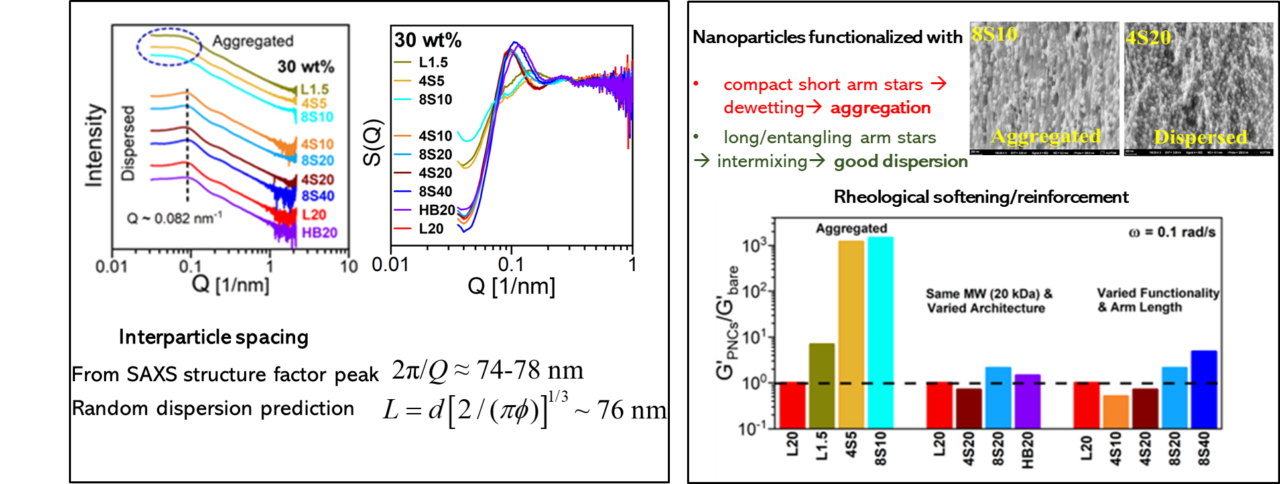Polymer nanocomposites (PNCs) have become essential components in many advanced materials applications, from solid state battery electrolytes to high-performance structural components. In PNCs, the large fraction of interfacial polymers determines their outstanding rheological performance; yet, strategies to control the structure and dynamics of the interfacial polymer has been very limited. Here, using poly(ethylene oxide)-silica model nanocomposite system, we propose a facile approach based on varying macromolecular architecture of interfacial polymers. We show that by changing the topology of the bound polymer from linear to star and hyperbranched, polymer-NP interaction as well as chain interpenetration in the interphases can be effectively altered without changing type or molecular weight of the polymer, or NP surface chemistry in attractive PNCs. Our results show that both dispersion and rheological behavior of PNCs depend highly on functionality and arm length of the polymers used at the interfaces. These results can be used to design ion-conductive molten polymer electrolytes with significantly improved mechanical properties suitable for solid-state battery applications.
Interfacial polymer architecture can control nanoparticle dispersion and rheological behavior of nanocomposites


